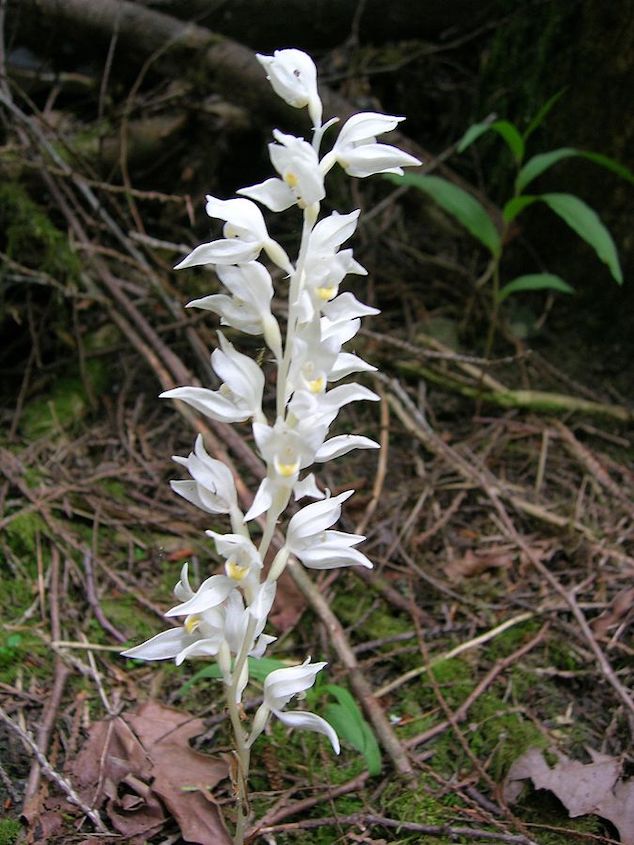The many trails weaving through the lush forest of Mont Saint-Hilaire are made all the more beautiful by the rich array of vegetation peppering the landscape. Among them are several species of trees that have taken root there for hundreds of years, including a few maple trees that are over 400 years old! Have you ever wondered how a tree can survive for so long in the same habitat? While there are multiple environmental factors at play, the most fascinating comes down to a type of fungus: Mycorrhizal fungi have a mutualistic relationship with almost every plant on Earth.
You’ve probably seen a fair share of mushrooms while trekking through the forest. What you’re actually looking at is the fruiting body of the fungi, which releases spores for reproduction. But that’s just the tip of the iceberg! Beneath the ground, invisible to the naked eye, a mass branching of thread-like structures (hyphae) extend into the soil and collectively make up the mycelium, a vast network used by fungi to communicate with one another and gather resources.
What does “symbiosis” mean?
Symbiosis is a long-term association between different species. The type of symbiotic relationship between mycorrhizal fungi and plants is considered to be mutualistic, as it benefits everyone involved. The exchange is transactional: the plant lets the fungi have its surplus resources (mostly carbon from photosynthesis) in exchange for essential nutrients, such as nitrogen and phosphate, which the fungi take directly from the soil.
The seeds of collaboration
The mutualistic association occurs when the roots of the plant are in a depletion zone, that is to say, an area where the soil lacks nutrients due to intensive use. Faced with this scarcity of resources, the plant attempts to recruit mycorrhizal fungi by releasing chemicals into the soil. If the fungi are responsive to these chemicals, then they release a specific chemical of their own, initiating the symbiotic relationship
A fruitful alliance
Once symbiosis is established with a plant, the mycorrhizal fungi get to work. The reward: organic carbon, which the plant gets from its leaves and is a vital source of energy for growing new tissues such as leaves and flowers.
Mycorrhizal fungi are divided into two main types: ectomycorrhizal fungi and endomycorrhizal fungi. These fungi are found outside and inside plant root cells, respectively, with each location providing its own set of benefits.
Ectomycorrhizal fungi have excellent enzymatic capabilities, meaning that they can easily break down large molecules in the soil to supply plants with the nutrients they need to survive.
Endomycorrhizal fungi, on the other hand, boost plants’ immunity to pathogens and help them better tolerate environmental stressors such as drought.
The symbiotic fungi/plant association is so prevalent that some plants are entirely dependent on mycorrhizal fungi for their survival. For example, the phantom orchid (Cephalanthera austiniae), a species native to British Columbia, is non-photosynthetic, which means that it can’t make its own carbon supply. Instead, it secretly piggybacks off an existing symbiotic association between endomycorrhizal fungi and a tree. By indirectly linking itself to the photosynthetic tree through the mycorrhizal fungi, the orchid gains access to a steady supply of carbon.

The phantom orchid does not have chlorophyll. Without this pigment, the plant cannot photosynthesize, hence its white, rather than green, colouring. (Photo: sramey through Wikimedia Commons)
A perennial partnership
The relationship between fungi and plants is an incredibly ancient one, dating back to the Cambrian Period, approximately 500 million years ago. In fact, it was instrumental in allowing the first aquatic plants to flourish on land, eventually diversifying into the incredible variety of plants we see today.
In sum, mycorrhizal fungi help plants not only survive but thrive in their environment. So, the next time you find yourself in the forests of Mont Saint-Hilaire, take a moment to appreciate these unsung heroes of the forest and their far from trivial contribution to the beauty that surrounds you.
Morgane Dubé
Field Operations Assistant
Gault Nature Reserve of McGill University
References
The information included in this article is primarily sourced from a biology course at McGill University (BIOL 205, Fiona Soper (Prof.), Caroline Dawson (TA)).
Read more about mycorrhizal fungi:
- Le secret des champignons mycorhiziens, published by Université de Montréal on February 24, 2022 (in French)
- La mycorhize, la symbiose qui a fait la vie terrestre, published in Pour la science le 28 novembre 2018 (in French)
Header: Fly amanitas are ectomycorrhizal fungi that interact with neighbouring plants. They form a mutually beneficial relationship with a host of different perks. (Photo: Holger Krisp)

